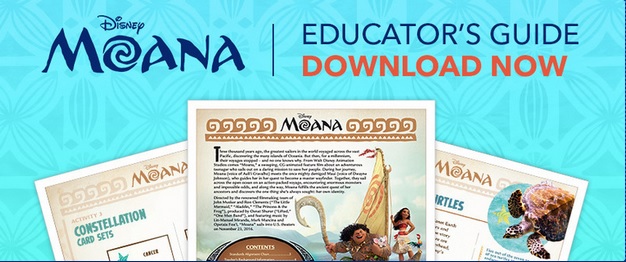I’ve previously posted about the movie “Moana” (Will Disney’s “Moana” Be More Helpful Than Unhelpful To Our Pacific Islander Students, Their Families & Culture?). In that post, I shared links to posts expressing concerns about the movie, and I also wrote that I expected our Pacific Islander students to love it. That has certainly been their reaction.
But concerns about the movie continue to come up, and I thought I’d both reprint most of my original post here and add new resources, too. I’m thinking that they would be good to use in a lesson when we study Oceania in Geography. And, since that’s the last unit of the year, if we’re lucky the movie itself will be available on DVD.
First, here are two newer critiques, including one appearing in today’s New York Times:
The Supersize Cliché in ‘Moana’ is from The New York Times.
Critics Accuse Disney of ‘Culture Theft’ Ahead of ‘Moana’ Release is from NBC News.
And here’s a modified version of my original post, along with some additional video clips:
Disney’s new movie, Moana, will be opening later this month. As you’ve probably heard, it has a focus on Pacific Islander culture and also features music by Hamilton creator Lin-Manual Miranda.
The trailers seem very entertaining – to me, at least (see the trailer below) – and Disney is making a big deal of its efforts to connect to Pacific Islanders during the movie’s production and make it as “authentic” as possible (see the second video embedded below and this article).
It’s also come in for some criticism, especially for it’s portrayal of the demi-god, which some view as “obese” and “racially insensitive.”
I have a particular interest in the film because of the large number of Pacific Islanders at our school and in my ELL classes.
My suspicion, and I might very well be wrong, is that most will be thrilled by the movie. I think it will create lots of opportunities in multiple classes for English development, as well as for highlighting Pacific Islander culture in other content classes (Disney has a pretty extensive downloadable educators guide for the film).
I think criticism of the film also offers an opportunity to examine those points in class and solicit student feedback.
My response to the question posed in the headline of the post is that I think it will be an overall positive. Just as Clint Eastwood’s Gran Torino received some critique in the Hmong community, many Hmong (at least, my students and their families) appreciated the public recognition of their culture and we were able to use it for many educational purposes.
However, until I see if my expectation is accurate, I’ll refrain from adding this info to The Best Sites For Asian Pacific American Heritage Month.
In New Zealand, a Translated ‘Moana’ Bolsters an Indigenous Language is from The NY Times.




I just came across your blog while searching for Moana teaching resources. I am a teacher in New Zealand and we have extensive interconnection with Samoa here. The class, and school, I teach is around one third Samoan and the Samoan culture is widely represented throughout Auckland.
Moana is a gift to the Samoan community and the next generation of Samoan children. It has been watched, rewatched, and rewatched multiple times again by any child with Samoan heritage and they can sing the songs by heart. Some can recite large passages of the entire movie.
It has instilled further pride in their heritage by seeing an accurate representation of their culture on the big screen.
I can’t thank Disney enough.